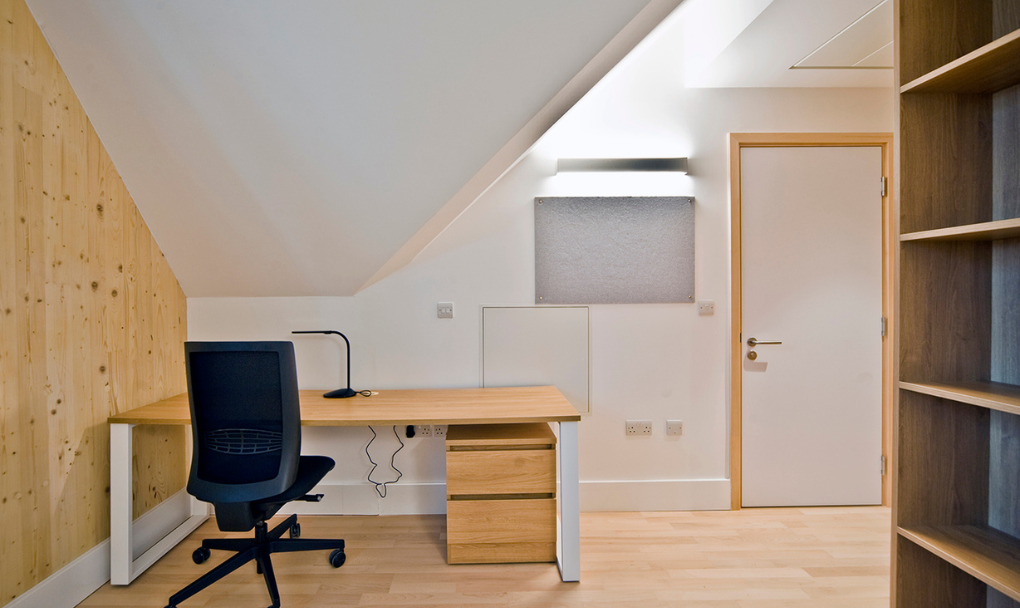CMS Danskin Acoustics has worked with acoustic consultants Atelier Crescendo to arrive at a floor build-up which has contributed to achieving acoustic performance significantly exceeding Approved Document E ‘Resistance to the passage of sound’ 2003 standards at new student accommodation for St Catharine’s College in Cambridge.
The accommodation provides two new houses (comprising 23 bedrooms) and improved communal spaces for students to work and socialise at St Catharine’s satellite site on the west of the city centre. It was opened to students in October. The project was designed by Cottrell & Vermeulen Architecture, and the main contractor was Conamar Building Services.
Designed with sustainability in mind, the student accommodation has mass timber frames (mostly Cross Laminated Timber), triple-glazed windows and air-source heat pumps.
Internal base floors are cross laminated timber (CLT), which supports the sustainable ethos behind the design. CLT is increasingly used as it helps in locking away carbon by using it as a long-term construction base and it reduces the use of concrete in floors. However, because CLT is around one third of the mass of concrete, it presents challenges acoustically. Its sound reduction index is poorer and its damping properties from impacts are also lower than concrete, therefore it requires an acoustic strategy to limit impact and airborne sound travelling through.
After taking into account the BREEAM® requirements, the criteria to be met for St Catharine’s was that the airborne noise reduction must be over 48dB DnTw and the impact noise must be measured as under 59dB LnTw.
CMS Danskin Acoustics designed and supplied a floor/ceiling build-up using recycled materials to help improve the floor mass and enhance its impact absorbing properties. The strategy involved double REGUPOL impact isolation layers. Layers of 3mm REGUPOL sonus eco, 18mm Versapanel® from Euroform and 15mm REGUPOL sonus core were used to isolate impact sound, followed by a 32mm Smartspan, which is finished with a timber floorboard or plywood underlay with vinyl.
CMS Danskin Acoustics also specified and supplied Kinetics IsoGrid hangers, a high performance hanger used for suspending ceilings where the maximum noise reduction performance is required.
Site completion measurements undertaken by Atelier Crescendo indicated airborne noise 51-57 dB DnTw + Ctr, depending on location, and for impact it was 49-52dB LnTw, depending on location, so significantly surpassing Document E standards and significantly exceeding the more demanding project acoustic performance targets that had been set.
Paul Absolon, CMS Danskin Acoustics’ technical director, said, “Working with CLT does present acoustics challenges, but we devised a floor/ceiling specification to counter that, which has achieved acoustic performance that exceeds regulations.”
Marc Fuzellier, director of Atelier Crescendo Ltd and Acouwood UK LLP, adds, “We are very happy about the outcomes of the project, especially in terms of airborne and impact sound insulation performances.
“We worked hard to develop the right wall and floor build-ups, detail how they had to be connected and minimise the sound flanking transmissions. This was particularly the case when CLT elements had to be exposed.
“In the end, high sound insulation performances have been achieved so that more BREEAM® credits could be obtained.”


